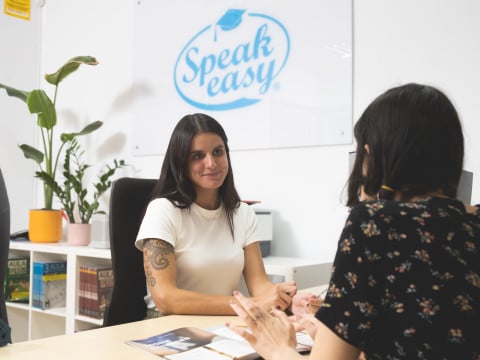You may not have given too much thought about verbs of transformation function in your own language, but you'll see that Spanish has many for you to use. In English, we say "to become" or "to turn". In the Spanish language, changes and transformations can be expressed with 6 different verbs. Read on to find out how to use the transformation verbs _volverse_, _quedarse_, _hacerse_, _ponerse_, _llegar a ser_ and _convertirse_.

Volverse + adjective
Volverse when used with an adjective expresses a quick and lasting change in the personality or attitude of a person. These changes are generally involuntary.
Juanita siempre se sentía a gusto en su barrio, pero cuando le robaron se volvió muy cuidadosa.
Juanita always felt comfortable in her neighbourhood, but when she was robbed she became very careful.
In this example, the one quick event that changed Januita’s attitude was being robbed, which resulted in her becoming very careful from then on.
Quedarse + noun / adjective
Quedarse used with an adjective or a noun expresses a change after something (usually) negative happens.
Después de traicionar a sus hermanos, se quedó solo.
After betraying his brothers, he was left alone.
The transformation can also be a physical one like:
quedarse sordo
quedarse ciego
quedarse calvo
Sandra se quedó calva después de muchas rondas de quimioterapia.
Sandra was left bald after many rounds of chemotherapy.
Quedarse + con / sin + noun
We use quedarse with sin or con to indicate that someone or something has been left with or without something.
Cuando murió su abuela, Pablo se quedó con mucho dinero.
When his aunt passes away, Pablo was left with a lot of money.
_El coche se quedó sin batería por pasar muchas noches en el frío. _
The car was left without battery because of spending many nights in the cold.

Ponerse + adjective
Using the verb ponerse with an adjective signals a rapid change which is usually temporary. The change can be physical, relate to mood or to health. For example:
ponerse enfermo
ponerse nervioso
ponerse triste
As you can see, these changes do not last forever. One can be sick for a few days or temporarily melancholy from watching a movie.
Elisa siempre se pone nerviosa cuando tiene que presentar en frente de la clase.
Elisa always gets nervous when she has to present in front of the class.
Daniel se pone triste siempre que acaban las fiestas navideñas.
Daniel always gets sad when Christmas ends.
Hacerse + adjective / noun
When hacerse is used with an adjective or a noun, it can express a change of ideology, profession or other external aspects of a person or animal. Usually, the change requires the person to have some role in the change.
Melania se ha hecho vegetariana.
Melania became a vegetarian.
Marcel se hizo rico en la bolsa de valores.
Marcel became rich in the stock market.
Hacerse can also be used to indicate a change of time or age, like in hacerse tarde.
Sus hijos se han hecho mayores.
Her children became big.
Es hora de irse, ya se hizo de noche.
It’s time to go, it’s already become night.

Convertirse / transformarse en + noun
These two verbs are used to describe a radical or drastic permanent change. They often indicate a physical transformation and are frequently used for important changes in the social sphere.
El sapo se transformó en príncipe.
The toad transformed into a prince.
We can also use convertirse + a to indicate that someone has converted to a religion.
Tara se convirtió al budismo.
Tara converted to Buddhism.
Llegar a ser + adjective / noun
Llegar a ser signifies a change that comes as the result of prolonged effort. It is usually used with professions or roles that generally require a long and hard process.
Después de estudiar muchísimos años, Raúl llegó a ser cirujano.
After studying for many years, Raúl became a surgeon.

Posted in Learn Spanish
Learn and improve your Spanish in Barcelona, one of the world's most vibrant and exciting cities.
Here at Speakeasy you'll find courses for all abilities and timetables, an incredible team of talented and motivated teachers and classmates to share your interests and passions. And if you need a visa for your stay, then of course we're able to help and advise.

Start your learning Spanish in Barcelona adventure
Let us know if you have any questions about our courses, our school and life at Speakeasy.